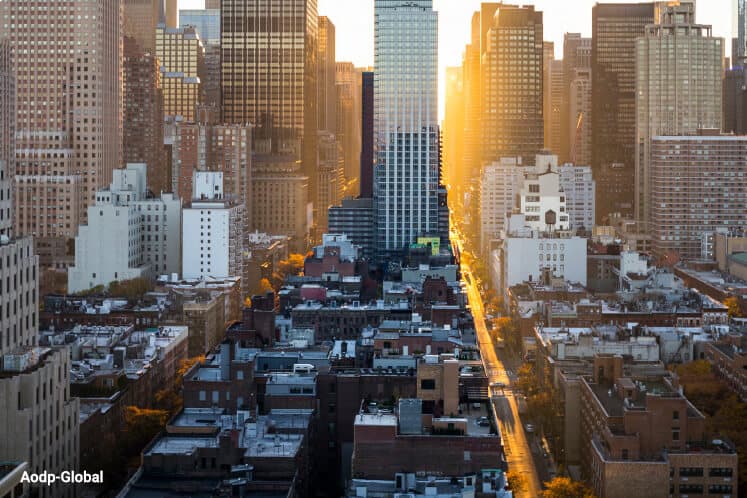
This article first appeared in Personal Wealth, The Edge Malaysia Weekly on May 8, 2017 - May 14, 2017
Climate change has become a mainstream concern among the investment community, with conscious actions by asset owners and managers gaining momentum around the world. According to the Global
Climate Index 2017 — Rating the World’s Investors on Climate-Related Financial Risk, 60% of asset owners and nearly half of rated asset managers recognise the financial risks and opportunities of climate change.
Asset owners and managers who have acted to cut their exposure to climate risk and intensify their investment in the low-carbon economy are already seeing this strategy pay off, says the report.
“Pressure will now mount on those resistant asset owners and managers who fail to take action and report on climate change. When leading funds around the world are disclosing significant action, it becomes harder to defend doing nothing.”
The April 26 report was published by the Asset Owners Disclosure Project (AODP), an independent global not-for-profit organisation that researches the specific financial risk attributes of climate change. AODP has developed the world’s leading reporting framework for institutional investors, encompassing the disclosure and management of climate risk.
The report says asset managers are well placed to meet the growing demand as all but three of the top 50 are taking some action and, as a whole, are performing better than asset owners. “However, asset owners are ahead in terms of addressing climate risk, with 7% in the leaders’ group versus 4% of asset managers.”
Two asset managers make up the leaders’ group — AAA-rated Dutch APG Asset Management and AA-rated Legal & General Investment Management, which have US$441 billion and US$1.14 trillion under management respectively.
However, the result highlights an issue in the industry. There is a lack of transparency on policy and action at the corporate level, even where climate is acknowledged as a key issue to manage by a subsidiary.
“All three laggard managers are based in the US. Fidelity Investments, one of the largest global investment managers with US$2.06 trillion under management, makes no mention of climate change, responsible investment or ESG [environmental, sustainability and governance] in any of its publicly available information,” says the report.
“As a privately owned company, there is very little disclosure and a general lack of transparency regarding its policies and actions as an investor. This may reflect Fidelity’s market — nearly two-thirds of US asset owners are laggards. And with 94% of its funds under management sourced from this market, there may be little pressure from institutional clients for a more progressive ESG approach.”
The report says a majority of asset owners — 299 institutions with funds worth US$27 trillion, representing 60% of asset owners and 70% of index assets under management (AUM) — have scaled up action to protect their portfolios from climate risk. Major institutions are leading the way. TIAA, the US$915 billion US pension/asset manager hybrid, and AXA, the US$601 billion global insurance giant, have joined the leaders group, which now comprises 34 global institutions.
“The number of laggards has dropped by 19% and now accounts for just 40% of the index, with US$12.4 trillion in AUM. Insurers such as Mitsui Mutual and National Mutual in Japan and pension funds such as Thrift Savings Plan in the US are putting the financial future of customers at risk by failing to acknowledge the risks and opportunities afforded by the low carbon transition,” says the report.
“Nearly one in five asset owners has staff focused on integrating climate risk into their investments, a 33% increase from last year. Two in five now incorporate climate change into their policy frameworks — almost twice as many as last year. And 13% of asset owners now calculate portfolio carbon emissions, up from 10%. However, assessing the risk of stranded assets is still quite an advanced tool used by only 6% of the index, mostly in the leaders’ group.”
According to the report, the world’s two largest economies — the US and China — are among the worst performers, although the US is highly polarised with some important leaders. “In China, laggards make up 67% of asset owners, with investments worth US$2.6 trillion — more than 80% of AUM. While China has championed green finance at the G20 and has ambitious targets to boost renewables, a lack of transparency prevents us from identifying increased low-carbon investment by its institutions.
“In the US, 63% of asset owners, with US$4.5 trillion of investments, are ignoring climate change. The US leads in low carbon investment in absolute terms. Green investments disclosed by asset owners doubled to US$55 billion, surging past the
US$47 billion of the Netherlands, last year’s top performer. Yet, this only represents 0.5% of the total AUM in the US, compared with the 3.1% average of Dutch investors. Across the index, low carbon investment has improved 68% to US$203 billion. Yet, it only represents 0.5% of the index AUM.”
According to the report, US President Donald Trump’s first 100 days in office have seen plans to reverse much of the action on tackling climate change. However, with strong opposition from influential states such as California and New York, it remains to be seen what effect federal action will have on companies and investors.
The AODP invited the top 500 asset owners, including pension funds, insurers, sovereign wealth funds, foundations and endowments with at least US$2 billion in AUM, as well as the top 50 global asset managers, to participate in the survey.
Save by subscribing to us for your print and/or digital copy.
P/S: The Edge is also available on Apple's AppStore and Androids' Google Play.